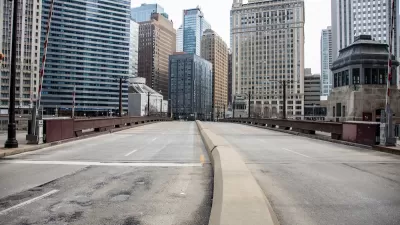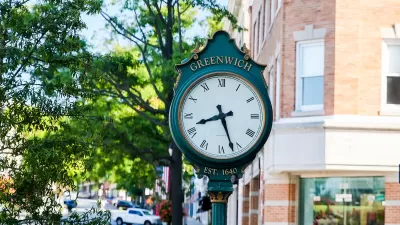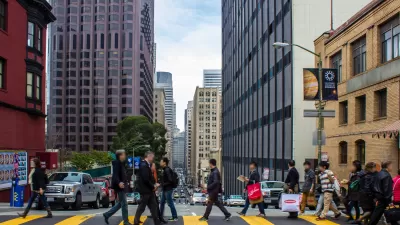Rather than ‘monofunctional’ business districts or urban playgrounds, American downtown districts could become multipurpose neighborhoods.

Writing in Wired, Amit Katwala suggests that the future of the American downtown, which has been by and large designed as “uniquely monofunctional” to serve 9-to-5 business purposes, is in not in attracting tourists with new amenities, but rather by transforming into real neighborhoods where people can live, work, and play.
As Katwala explains, “Strict zoning laws, combined with the widespread leveling of city centers in the 1960s and 1970s to build multilane highways, have created downtowns that are difficult to use for anything other than white-collar work.”
To revitalize struggling downtowns, some cities are reorienting their central business districts as “playground cities,” defined in the article as “downtown areas will be remodeled to attract leisure visitors as well as workers” but that urban scholars like Yonah Freemark warn could be a passing fad.
According to Freemark, “block-wide skyscrapers can also stifle life at ground level,” offering little interaction for pedestrians. “The park space is minimal. Roadways are horrible and extremely car-focused. All those things have to be thrown out if you want to create a neighborhood.”
Katwala writes, “Perhaps the answer to saving downtowns is actually a simple one: Transform them into neighborhoods in their own right that actually cater to the needs of the people who live there.” To start, city leaders can change policy to make it easier to convert offices and other downtown buildings to housing and other uses and reorient transit schedules to reflect post-pandemic ridership patterns.
FULL STORY: To Save Downtowns, Destroy Them

Planetizen Federal Action Tracker
A weekly monitor of how Trump’s orders and actions are impacting planners and planning in America.

San Francisco's School District Spent $105M To Build Affordable Housing for Teachers — And That's Just the Beginning
SFUSD joins a growing list of school districts using their land holdings to address housing affordability challenges faced by their own employees.

The Tiny, Adorable $7,000 Car Turning Japan Onto EVs
The single seat Mibot charges from a regular plug as quickly as an iPad, and is about half the price of an average EV.

With Protected Lanes, 460% More People Commute by Bike
For those needing more ammo, more data proving what we already knew is here.

In More Metros Than You’d Think, Suburbs are Now More Expensive Than the City
If you're moving to the burbs to save on square footage, data shows you should think again.

The States Losing Rural Delivery Rooms at an Alarming Pace
In some states, as few as 9% of rural hospitals still deliver babies. As a result, rising pre-term births, no adequate pre-term care and "harrowing" close calls are a growing reality.
Urban Design for Planners 1: Software Tools
This six-course series explores essential urban design concepts using open source software and equips planners with the tools they need to participate fully in the urban design process.
Planning for Universal Design
Learn the tools for implementing Universal Design in planning regulations.
Smith Gee Studio
City of Charlotte
City of Camden Redevelopment Agency
City of Astoria
Transportation Research & Education Center (TREC) at Portland State University
US High Speed Rail Association
City of Camden Redevelopment Agency
Municipality of Princeton (NJ)





























